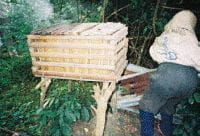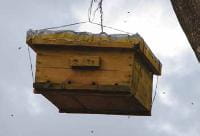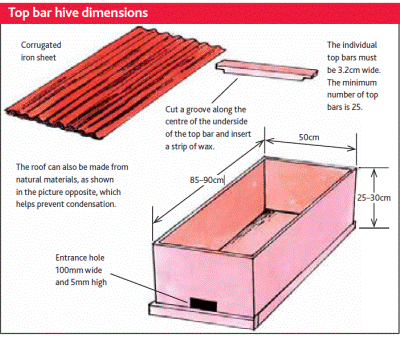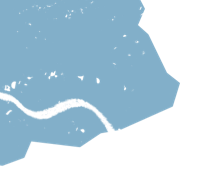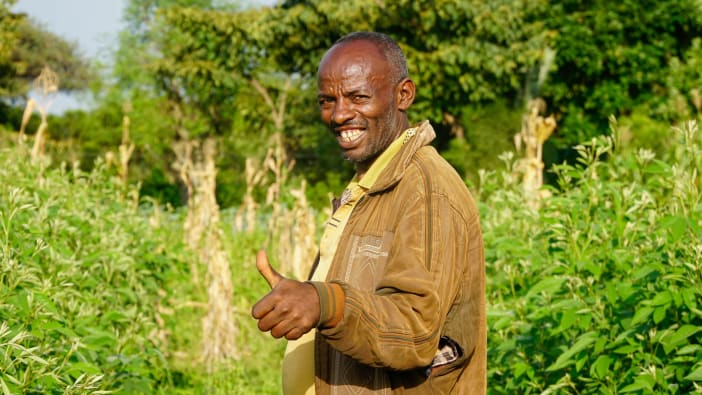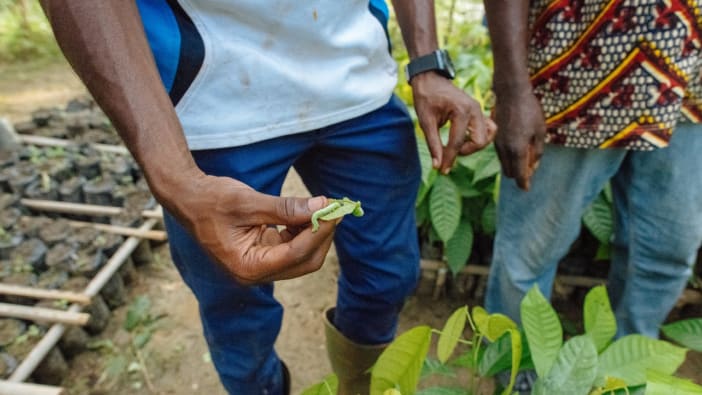I remember waking up in the house where my wife and I lived near the village of Manse Nzundu in the Democratic Republic of Congo (DRC). Outside it was only just beginning to get light yet I could hear the sound of bees working some flowers in the surrounding forest. I crept out and followed the sound. I was led to a tree with masses of flowers. Hundreds of bees were working them. Bees and trees depend on one another.
Bees depend on trees
Of all plants visited by honeybees in Africa, trees have been found to be the most important. The bees prefer trees with white or yellow, sweet-scented flowers. Tree species belonging to just six families of tree types (genera) contribute nearly half the total of all those visited. In sub-Saharan Africa these trees normally flower between September and November and the peak brooding and reproductive swarming of a honeybee colony can be accurately predicted following this flowering. Their wide distribution throughout the continent is thought to be because they are largely pollinated by bees. Examples are species of acacia, Brachystegia and Julbernardia. There is much anecdotal evidence in DRC that where forests have been cut down, honeybee colonies are fewer and less honey is produced.
Trees depend on honeybees for pollination
In DRC the yields of fruit from mango, avocado, coconuts, coffee, citrus, pawpaw, rambutan and the African pear (Dacryodes edulis) are improved when honeybees are present. It is estimated that more than 75% of the crops in warmer countries benefit from pollination by bees. Improving yields through plant breeding takes a long time. However increasing the number of pollinating insects can often improve yields much more rapidly. Though a variety of insects are important for pollinating mangoes, honeybees are probably the most efficient. Their hairy bodies tend to transfer pollen easily. They also work on the flowers of a single plant species consistently. It has been found that the decline in the number of bee colonies in the USA has resulted in a decline in production of those crops which are mainly dependent on insect pollination. Scientists around the world are very concerned that the number of bees is decreasing. There are a number of possible causes, including the loss of water resources and increasing global temperatures.
Beekeeping that benefits forests
Kibungu Kembelo, the director of Kisantu botanic garden in DRC, told me that the introduction of beekeeping in Bas-Congo province, where beehives are located in small areas of indigenous forest, has been the means of preserving what little forest remains.
Because honeybees in Africa tend to be aggressive, beehives are best kept in areas away from people and livestock. Hives should not be close to the village, or busy footpaths. In hot, moist countries, beehives need plenty of high shade. This is most easily provided by trees, many of which will also provide nectar and pollen.
Where honey badgers are a problem, hives can be hung from the branch of a tree rather than put on the ground. As well as providing shade, pollen and nectar, trees provide building materials, local materials for making beehives, habitats for edible caterpillars, vegetables and fruits. Placing hives in forest reserves helps to protect such areas from deforestation and maintains biodiversity.
Key tips for good beekeeping
1 Make hives locally
In general, hives should not be imported or purchased, but made out of materials that are available locally. This will ensure they are cheap and accessible to the poorest people. If people can make their own hives from local materials, they do not have to depend on outside organisations, and they can build more hives at a rate that suits them and their surroundings best, for little or no cost.
Some care needs to be taken with materials so that bees do not get too hot or suffer from condensation. If natural materials are used this is unlikely to be a problem.
The top bar hive is widely used in Africa and provided the bars on which the bees construct comb are exactly the correct width (3.2cm) and have a strip of wax inserted along a groove cut along the centre of each, the bees will usually build comb on each bar. The combs can then be inspected easily and removed during harvest.
2 Provide water
If bees have to travel long distances to find water, they use time and energy that is better spent on collecting nectar and pollen. Water can be provided in a container but make sure the bees have somewhere to land safely. Sticks floating on the surface or stones placed in the container up to the level of the water can be used to prevent them drowning.
3 Inspecting and harvesting
Harvest honey in the evening using smoke to calm the bees. Wear protective clothing so that you can work quietly and calmly. After you have closed the hive, the bees are unlikely to cause problems. The bees have the whole night to settle down and people are in their homes, away from the bees.
4 Check the hives regularly
Once a week, make sure ants are not entering the hive. This can be done without opening the hive. Hanging the hives on wires which have grease smeared on them can keep ants away.
5 Learn from local beekeepers
Find out who the successful local beekeepers are and learn from them. Most are only too willing to help.
Paul Latham was involved in starting a beekeeping project in the Democratic Republic of Congo. He became particularly interested in the trees bees depend on for pollen and nectar, and has prepared manuals on bee forage plants in DRC and the Southern Highlands of Tanzania.




